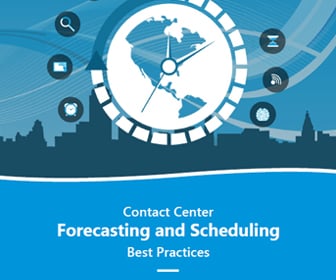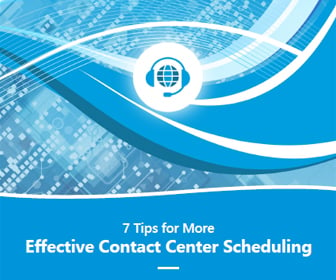Workforce Management Featured Article
November 21, 2006
Steps to Effective Call Center Scheduling
Call Center Scheduling can be a challenge in that the manager wants to ensure that the center is staffed to respond to anticipated call volumes, but not overstaffed so that agents are sitting idle. Understaffing can create an even bigger problem as customers are forced to wait longer to speak with a live agent and agents are stressed with a heavier work load while trying to still deliver excellent customer service.
As a result, the call center manager must be able to achieve that delicate balance when scheduling for the center. He or she must consider hours of operation; the mix of full-timers, part-timers, permanent and seasonal employees; volume fluctuations; the support staff; occupancy and service level targets; specific customer service representative skill sets; and multimedia contacts and blending.
In order to effectively schedule for the call center, the manager must follow certain steps. First, he or she must gather forecasted call volumes and types that the call center expects over a given period. Second, the manager must establish what service level objectives have been established for the call center.
The call center manager can then distribute the volumes and contact types across a typical week. The next step for the manager is to calculate the base staffing requirements. This can be done using workforce management applications. This practice will help the manager to determine how many active agents are required in each time interval.
Once base staffing requirements are determined, the call center manager must then add in rostered staff factors. This rostering will ensure that the staff level can account for unproductive or non-contact time such as lunches, breaks, training, vacation and sick time.
The manager should next create various models or dummy schedules and run simulation tests to determine the impact on service level and occupancy. To gain a complete understanding of possible scenarios, the manager should create an aggressive model, a conservative model and a mid-point model.
Finally, based on these test results, the call center managers should select the optimal model for his or her call center. It is at this point that staffing level projections can be translated into agent schedules.
As much as following a process like this can help the call center manager develop accurate schedules, no system is fool proof and the proper resources must be in place to handle unexpected peaks and valleys. The most important consideration should always be the level of service that the center is providing the customer and that scheduling is done to achieve or exceed that goal.
Susan J. Campbell is a contributing editor for TMC and has also written for eastbiz.com. To see more of her articles, please visit Susan J. Campbell’s columnist page.







